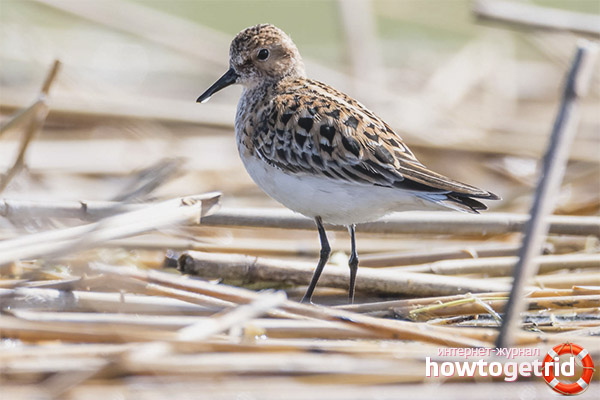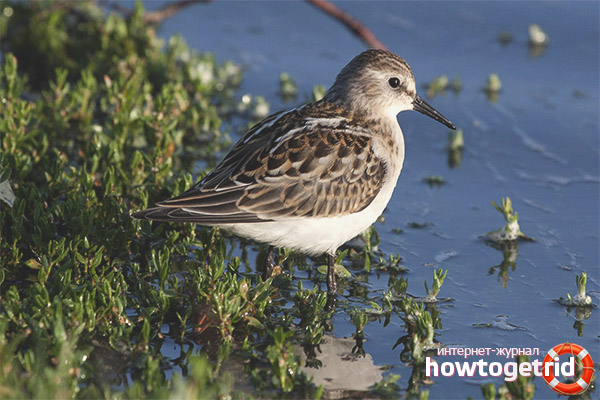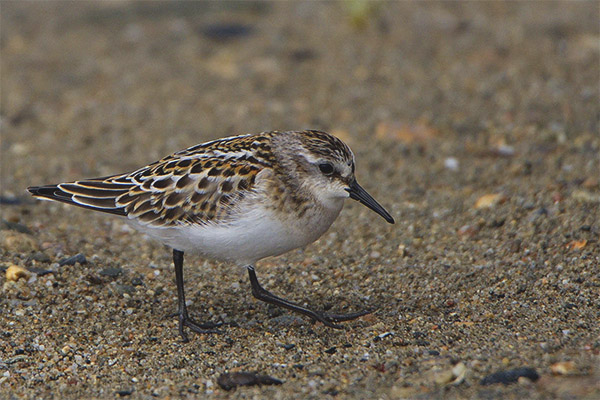The content of the article
For residents of a large city, pigeons, ravens and sparrows are considered the most common birds - they are everywhere, the sight stumbles upon them anywhere in the urban landscape. In the wild, other birds are common, one of them is the bird sandpiper. Only in Russia there are more than 70 species of them, united in three dozen genera. One of the species of sandpipers lives on Russian territory - the sandboxes, which include dunlins, red-finders, gerbils, and so on.
Without this bird, the tundra would be much duller. The flocks of waders fill the endless tundra open spaces with noise, din and various songs that are published during the tokanie, they enliven the thawed patches that have just been deprived of snow with games in the air. Externally, the representatives of this species are very similar to the ordinary habitual pigeon, however there are quite a few individual distinguishing features that distinguish sandboxes from other sandpipers.It will be about one of the numerous representatives of the species of sandboxes named Kulik-Sparrow.
Appearance
The weight is very small - from 20 to 33 g., The length of the body is 12-15 cm., The wings are long, but narrow - from 9 to 10.5 cm, the wingspan is 30 cm. According to external signs, there is practically no difference between the sexes. Is that females a little larger.
Habitat
This small bird prefers to settle in the northern latitudes and chooses tundra areas for living, settles near coastal bodies of water, this is how it refers to near-water species. Habitat is wide - from the forests of Norway to the lower course of the Lena. Sparrow Kulika is sometimes encountered on some of the islands of the planet’s most northern ocean - the Arctic Ocean.Sometimes it even climbs to the forest-tundra located to the south. Refers to migratory birds, wintering sent to the South Asian regions, Africa, to the south of the Caspian Sea.
After returning from their southern warm regions to their native lands in late March - early April, the birds begin their mating games - we are talking. It looks like this: the male flies high up, raises up the wings and pulls them. At the same time he sings, uttering a trill, similar to the chirping of a grasshopper.
Nesting and breeding

Nesting begin depending on the climate. The nest is usually built under some stunted bush on a dry elevation - a hillock or knoll. Looks for or makes a small hole, covers the last year’s old dry grass and treading on it, crushing. The bottom of the nest is lined with grass, yernik leaves and leaves of growing dwarf trees - for example, dwarf willows. Often, the borders of the nest are so blurred that it is worth pulling eggs out of it - and you can not understand where exactly the nest is.
The female at the end of the first summer month lays 3-4 eggs of olive-brown color, but sometimes their color is different.Then all the cares of laying lay on the shoulders of the male - the female finds a new partner, the marriage games and tokens start again, and then makes laying from him. Or a lady can stay with the old one, build a new nest, lay 4 more eggs and hatch. It turns out that the couple has not one, like all birds, a nest, but two.
After 18 - 26 days, chicks covered with light downhill hatch. Almost immediately, parents take them out of the nest, continuing to take care of the children, warm them during the cold weather, protect them from hazards and provide them with food. Two weeks later, the kids completely fledged, but so far they can not fly. As soon as the grown-up children begin to flutter, the parents immediately leave them, and the young begin an independent life.
Nutrition

Kulik - a bird, mostly carnivorous, eats animal food. Collects in shallow water areas near open reservoirs where there is little vegetation, insects such as ground beetles, it catches mollusks, crustaceans, water bugs, moth larvae and other aquatic insects in water. Sometimes it collects and pecks seeds from some plants.It feeds on land with small pecks, picking up food, probes sludge in water, finding prey by touch and eating it.
Their favorite insect is locust. The sands are ready to walk endlessly on the grass, looking for and destroying this pest.
Interesting Facts
The Kulik Sparrow is not a shy bird, it has a balanced calm character and trusts not only other birds, but also man. When the sandpiper hatching eggs, you can come close to the nest, without fear that he will fly away. He just starts running around the house, marking time, bouncing, squeaking softly, and trying to lead the stranger away from the nest. If you just lie beside you, sitting quietly and not making any movements, then the bird calms down, sits back and continues to hatch, as if nothing happened.
Life expectancy is quite long - about two decades.
Young chicks from different families, left by parents for an independent life, are combined into one large group. This usually happens in the second decade of August.And this pack for a whole month - one and a half until the autumn, wanders across the expanses of the tundra, preparing for the upcoming flight.
Kulik fly for wintering sometimes to very distant lands - you have to overcome a distance of up to 10,000 kilometers. Being near-water birds, for rest they choose, respectively, places near the water. They sit on the banks of rivers, lakes, salt marshes, reservoirs.
Video: Sparrow Sandpiper (Calidris minuta)











To send